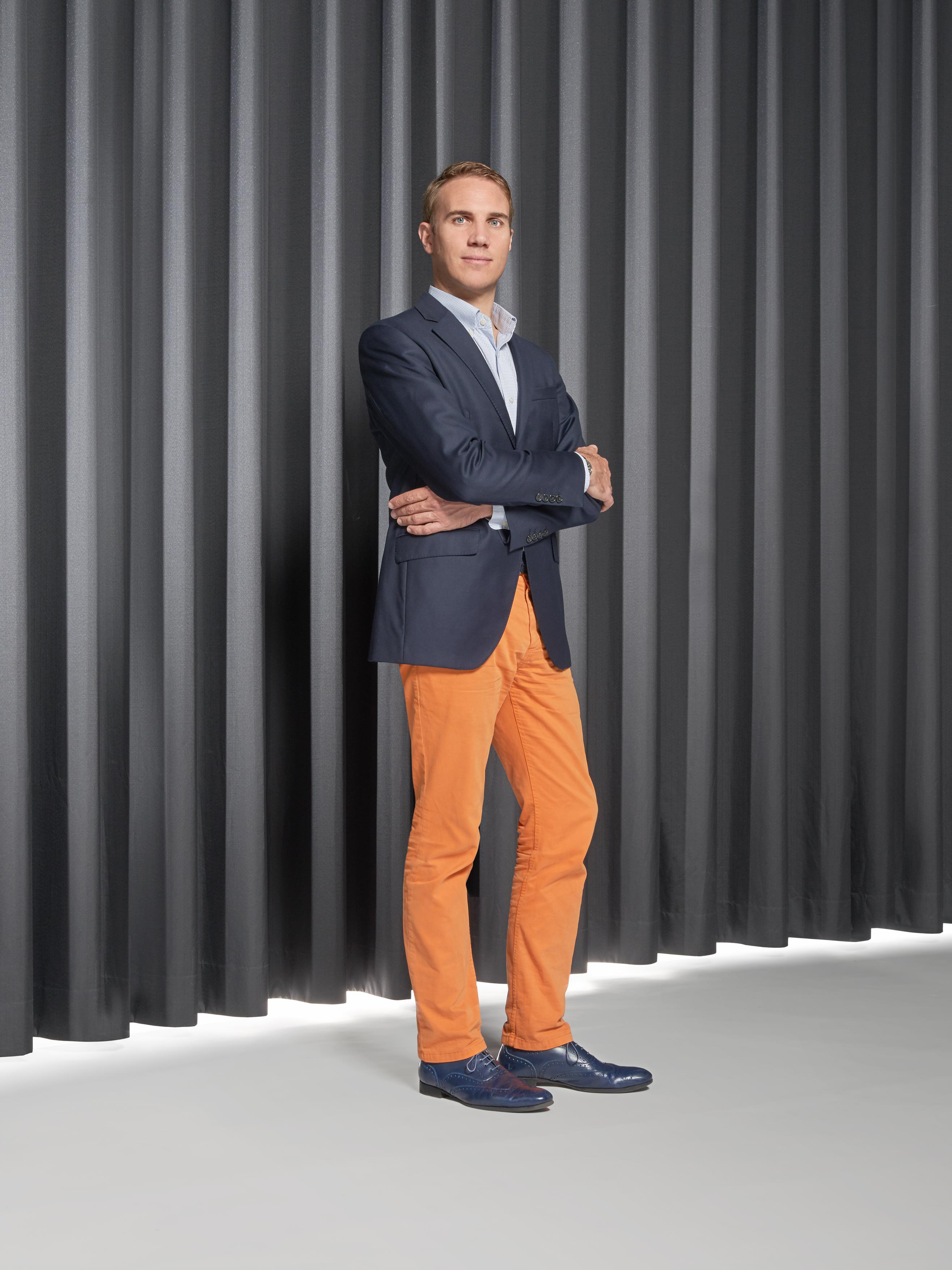
Stories Talk | Presentation Skills and Effective Storytelling
Stories Talk | Presentation Skills and Effective Storytelling
By Mia Kollia
Translated by Alexandros Theodoropoulos
What was the path that led you to where you are today? Was that your initial goal?
It wasn’t a goal, definitely not - it was something that came up. When I finished my studies in 1999, the Department of Industrial Design of the École cantonale d'art de Lausanne (ECAL) offered me a job as an assistant professor, which I did for a year and then offered me a position as director of the whole department. Since then, a course began that was quite close to the school while at the same time I kept my own work as a product designer, but as a secondary occupation. Now it takes up even less of my time, because at School I have a lot of responsibilities, but I don’t mind because I channel my creative dynamics into a wider range of subjects. This doesn’t mean that I consider myself an expert in what is taught at ECAL, but I certainly know more than ever before.
In our mind we usually associate the concept of "creation and creativity" with the birth of a thing - an object, a painting, a work of art in general. What do these concepts mean to you?
For me, creation and creativity can be found on many levels. One level may be that of the designer or painter doing a work. But it can also be found in a school, where creativity may not be tangible, but extends from the topic we will try to develop in a composition, to how a school of art and design can have an opinion on what is happening around us in the world today, or about how students - professionals of tomorrow - will be able to find their way into an ever-changing reality, while maintaining coherence and being consistent. When students come to school, they trust us for some years of their life. During this time, they need to have some time to look for what they want to be, but also to be provided with a solid foundation to evolve.
Have you encountered at school cases of children who come up with a dream about what they imagine they will do in their lives but end up heading somewhere else? I mean, is it easy for someone to define their path from the beginning?
Today, information about everything is more easily accessible than it used to be. So, someone who comes to school already has a first idea of what he wants to do. I would like to say that if someone comes and says, “I want to study photography”, but without having a natural curiosity about things in general, he may not be possessed by a real need to do what he says. Of course he doesn’t need to be a talented creator in advance, but he must have the thirst to move forward. On the other hand, there are some who think that they already know what design, photography or graphic design is, but what they have in mind does not reflect reality. We then have the role to confirm if the idea they have in mind is really the right one and for that reason, in the first year, we give students the opportunity to change departments.
What if someone has got the desire to achieve and works too much, but is not gifted as we say? Can they succeed?
I believe that hard work, up to a point, can act as a counterweight to, let’s say, a lack of talent. On the other hand, one can have talent but needs to develop it. Talent alone doesn’t get you anywhere; I have seen that several times. It takes a lot of work, whether you have talent or not.

Do you think that technology, which is nowadays developed and has entered our lives completely, can help inspiration and creativity or do you see it as an obstacle?
Technology is a tool that one must know how to handle, so that it becomes an asset to one's inspiration without flattening it or making it the same as other people. One needs to try it and see how it works for them in order to consider it as an advantage.
Design or usability?
For me, design is usability. If we imagine a triptych, where on one side we have the mechanical part and on the other side we have aesthetics, the design is in the middle, something that has both useful and aesthetic aspects. That’s where the design finds the reason for its existence: it also has artistic elements that its creator gives it, but it also has characteristics that concern the materials, the production methods and the usability. If it’s not useful, then we change the field and talk more about art objects.
Is there objectivity in beauty?
If this kind of beauty has a use, I believe that there may be some parameters that justify objectivity. On the other hand, if we talk about something that is only aesthetically pleasing, it may be nice for some people, but not for others. Not to mention the different cultures, where everyone gives different interpretations and importance to the concept of beauty.
You have encountered some really difficult moments in your career so far, because you are still very young…
When you reach such a position quite young, usually everyone expects you to make a big mistake or are curious of how long you will keep going… This hasn’t happened to me - I think it's because of the choices I made about different things for the school, as well as the ideas I came up with when I took over. In fact, because I knew the school before, I was prepared and knew what I had to watch out for. By the end of the 2000s, the school had become quite famous, due to the Department of Industrial Design, which was at the epicentre at the time. ECAL did a very good job and was recognised for this department. The most important thing I’ve wanted to do from 2011 onwards was to give, as much as possible, the same "visibility" and recognition to other parts of the school, which were lagging behind.
The difficulty was that there was no recipe I could follow - it would be wrong to follow the “philosophy” that anything that works good somewhere can also work good anywhere else. So for each department I had to distinguish what specific assets could be applied that are also related to the profession. Every profession has some procedures which may seem very few, but when we look closely, we see that this is not the case. That is, you cannot promote a painting or sculpture artist with the same methods that you would do so for a new product designer. Even more so for the Cinema Department we have. Each profession has its own methods to promote new talent. So you have to find these methods, the platforms and the Media needed, in order for our graduates to stand out. Every year, we also try to find a theme for the international exhibitions, which serves as a milestone for the school and the people who watch us.
Are there any awards or collaborations you would like to tell us about?
Many. At the state-run Swiss Design Awards, half of the winners are graduates of our school - and this has been the case for several years. Also something we will announce very soon is that the Victoria and Albert Museum in London has opened a new exhibition in a new wing, entitled "Design 1900 until Now". For this collection they bought a project on 3D printing which we had done in 2018, it was called "ECAL Digital Market" and we had presented it at the Show of Milan.
What do you consider your biggest asset?
I believe that you need patience, not rush, because our field is constantly in need of new things and you have to watch this race from a distance. You need to be able to process things deeply, question them, ask questions again and again, and don’t be satisfied by the first answer. This doesn’t mean that you need to be extravagant. It is something more instinctive; the more you cultivate it, the more insight you will have.
#HisStory